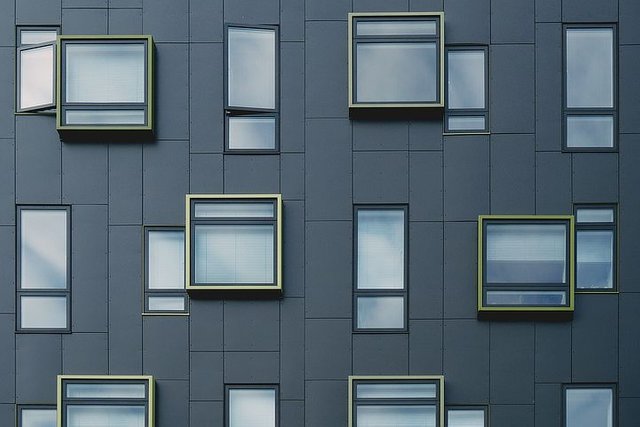How are the glass materials we use everday made?
GLASS
Glass is a non-crystalline, amorphous solid (i.e a solid with some features of liquid such as the structure of the molecules) and is often transparent.

It has a widespread usage in almost all industrial sectors from the production of body parts of vehicles, jewelleries and decors, household equipments and appliances, buildings and facilities and of all, in making glass bottles and apparatus used by health, chemical and pharmaceutical industries.
...
How are the glass materials we use everyday made?
Glasses are made from sand. The sand is usually the beach or desert type and they are largely constituted by silicon-dioxide.
To make the glass, sand is usually heated at a very high temperature of 1,700°C in a furnace to melt it. On cooling, sand doesn't return back to its former state instead, it's described as a frozen liquid (amorphous solid).
In commercial plants, sand is mixed with waste glass ( from recycling collections), soda ash (sodium carbonate) and limestone (calcium carbonate) and heated together in a furnace.
- The sofa ash saves energy by reducing the sand melting point. However, this makes the glass soluble in water and here is where the limestone comes in to stop it from occurring.
The resulting glass from the furnace is referred to as "soda-lime-silica glass".
We might also wonder, why glass is transparent when it parent material is opaque. I really don't know why but, your answers are highly welcomed.
...
Once the sand is melted, it is either
into molds to make conventional bottles, glasses, and other containers orpoured
(poured on top of a big vat of molten tin metal) to make perfectly flat sheets of glass for windows.floatedunusual glass containers like vases are made by
them. A lump of molten glass (gob) is wrapped around an open pipe, which is slowly rotated. Air is blown through the pipe's open end. This makes the glass to blow up like a balloon and with skillful blowing and turning, all kinds of amazing shapes can be made.blowing
...
Depending on the type of glass to be produced, glass makers use different procedures and some other chemicals in addition to the sand. Usually, other chemicals are added to change the appearance or properties of the finished glass. For example,
Green tinted glass is made by adding
iron and chromium-based chemicals to the molten sand.Stained or coloured glass is made by adding metallic compounds to glass while it is still in the molten state; different metals give the separate segments of glass their different colors.
Oven-proof borosilicate glass (widely sold under the trademark PYREX) is made by adding boron oxide to the molten mixture.
Crystal glass is made by adding lead oxide resulting into a fine crystal glass that can be cut more easily; highly prized cut lead crystal sparkles with color as it refracts (bends) the light passing through it.
Bulletproof glass is made from a sandwich or laminate of multiple layers of glass and plastic bonded together.
Toughened glass used in car windshields is made by cooling molten glass very quickly to make it much harder.
...
There are certain things I love about this advancement in man conpared to other stuffs in production.
It is chemically inert
When it is used as a container, it doesn't react with the content even if it's the most concentrated of acids and bases and it is perfect for surgical and pharmaceutical use.It is Non-toxic
It is totally safe to be used with foods and drinks and cannot cause harm to health.It can be recycled overtime (as much as it is required).
But there is a certain drawback about glasses. In the urban areas where glasses are used in constructing buildings and facilities, birds can't see glass and end up crashing into them and this may lead to death.